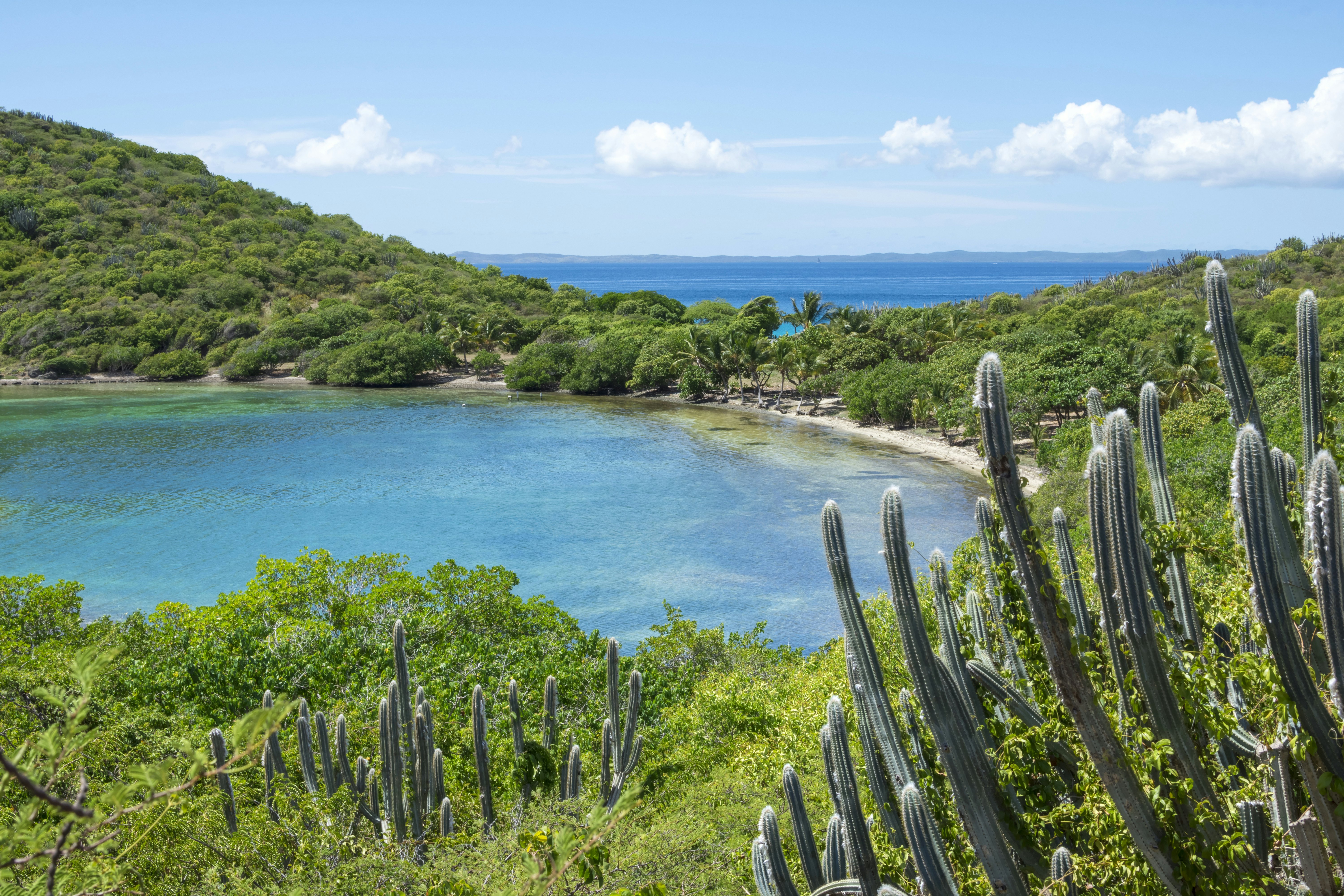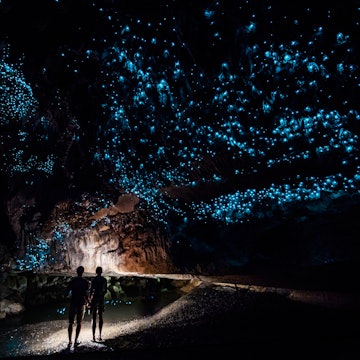
Culebra vs. Vieques: which Puerto Rican island is best to visit?

Aug 29, 2021 • 8 min read

The islands of Culebra and Vieques are separated from mainland Puerto Rico geographically and atmospherically © Stephani-Elizabeth / Getty Images
Separated from mainland Puerto Rico by an 8-mile stretch of choppy blue water, the two jewel-like Caribbean havens of Culebra and Vieques have an irresistible charm and laid-back beach vibe.
Disembark for a few days and you’ll uncover a wealth of surprises – horses roaming free in Vieques, endangered turtles in Culebra – and people who reclaimed their prized islands from the US Navy in 1975 (Culebra) and 2003 (Vieques) after more than 50 years of military occupation.
But it's the beaches that will have visitors to Culebra and Vieques purring with delight. Between them, the two members of the Spanish Virgin Islands have some of the most dazzling beaches in the Caribbean – best of all, many of them are deserted. Culebra and Vieques have yet to attract mass tourism, so there isn't a golf course, casino or humongous resort in sight.
Which island is best to visit on your trip to Puerto Rico? Here's a quick guide to Culebra and Vieques to help you decide.
Best things to do in Culebra
Long feted for its diamond-dust beaches and world-class diving reefs, sleepy Culebra is probably more famous for what it doesn't have than for what it actually possesses. There are no big hotels here, no golf courses, no casinos, no fast-food chains, no rush-hour traffic and, best of all, no stress.
Situated 17 miles off mainland Puerto Rico, but inhabiting an entirely different planet culturally speaking, the island’s slow pace can sometimes take a bit of getting used to. It’s home to rat-race dropouts, earnest idealists, solitude seekers, myriad eccentrics and anyone else who’s forsaken the hassle and hustle of modern life. It's also home to a range of gorgeous natural areas, bays, snorkeling sites, hiking trails and all manner of fine beaches.

Culebra's best beaches
Culebra’s beaches offer wild natural beauty. Tourist facilities vary, with plenty at Playa Flamenco and blissfully few at Playa Zoni. Several beaches are only accessible by hiking in, increasing the possibilities of having a Caribbean beach to yourself, at least for a few hours. Playa Carlos Rosario and Playa Tamarindo are great for snorkeling. Isla Culebrita and Cayo Norte are two of the more popular cays off Culebra and are easily visited by water taxi.

Turtle watching
Two of Culebra’s most isolated beaches – Resaca and Brava – are nesting sites for the endangered leatherback sea turtle, the world's largest living sea turtle (adults can reach 6.5 feet in length and weigh 1500 pounds). The nesting season runs from April through early June. Each year, a few volunteers are accepted by the Department of Natural and Environmental Resources to monitor the delicate egg-laying process. Volunteers travel out to the beaches, where they count eggs, measure turtles and document the event for environmental records. The smaller hawksbill sea turtle (up to 3ft long and 250 pounds) also lays eggs on Culebra's beaches.

Diving and snorkeling
Despite reef damage from the US Navy testing era and endemic climate change pressures, Culebra retains some of Puerto Rico’s most amazing dive spots, including sunken ships, coral reefs, drop-offs and caves. Highlights include the Wit Power tugboat (which sank in 1984), the Geniqui Caves, El Mono boulders and the fish-filled water world of Cayo Ratón.
Good snorkeling sites can also be accessed from many beaches. Tamarindo is a good example of the bounty on offer: it teems with a spectacular variety of fish and features a 50ft wall of coral, all protected by the Luis Peña Channel Natural Reserve. Other good spots include Playa Carlos Rosario and Playa Melones.
Culebra National Wildlife Refuge
More than 20% of Culebra is part of a spectacular national wildlife refuge, which was signed into law more than 100 years ago. Most of it lies along the coastline, including more than 20 cays. Home to three different ecosystems, the refuge is a habitat for endangered sea turtles and the largest seabird nesting grounds in the Caribbean. For visitors, it's a place for hiking, birdwatching and secluded beaches.

Where to stay in Culebra
Several guesthouses are a short walk from the Culebra's ferry dock, though there are many options island-wide. Some even have docks for boats. Culebra has an excellent selection of rental apartments and houses of all shapes and sizes dotted around the island, including many Airbnb and HomeAway properties.
Where to eat in Culebra
For a small island, there are plenty of choices when it comes to eating. Seafood figures prominently, much of it sourced from the fishing boats bobbing in the bay. Not surprisingly, most of Culebra's restaurants are in the tiny town of Dewey. Beyond town, keep your eyes out for food trucks, which offer cheap, tasty eats perfect for beach picnics.

Best things to do in Vieques
Measuring just 21 miles long by 5 miles wide, Vieques is renowned for its gorgeous beaches, semi-wild horses and sparkling bioluminescent bay. It's substantially larger than Culebra, and while it's still a world away from the bright lights of the mainland, the larger population here means more accommodations, swankier restaurants and generally more buzz.
Since the official withdrawal of the US Navy in 2003, Vieques has regularly been touted as the Caribbean’s next "big thing," with pristine beaches and a coastline ripe for the developer’s bulldozer. Fortunately, environmental authorities swept in quickly after the handover and promptly declared all the former military land (70% of the island’s total area) a US Fish and Wildlife Refuge. This has meant that the bulk of the island remains virgin territory. Development elsewhere has been slow and low-key. Understandably, Vieques’ residents – many of whom are continental US expats – are fiercely protective of their Caribbean nirvana.

Best beaches in Vieques
Now protected in the national wildlife refuge, many of Vieques' beaches are clean, untrammeled and paradisiacal. Calm and clear, Playa Caracas is reached on a paved road and has gazebos with picnic tables to shade bathers from the sun.
There's excellent snorkeling – lots of healthy sea fans and underwater life – off the eastern side of the beach. A favorite with locals, the gorgeous Playa La Chiva is long and open with occasionally rough surf. It's easy to find your own large patch of sand, and you can find shade in the shrubs. There’s good snorkeling toward the eastern side of the beach, just off a small island.
Secluded Playa La Plata is as far east as you can go. It's spread across a mushroom-shaped bay with icing-sugar sand and a calm sea that shimmers with a thousand different shades of blue. The snorkeling is good toward the western side of the beach. The road here is very rough; only a 4WD will get you close without walking. The deliciously deserted Playa Escondida has absolutely no facilities, just jaw-dropping beauty.

Vieques National Wildlife Refuge
Lying within the protected confines of the Vieques National Wildlife Refuge are some of the best reasons to visit Vieques. The refuge, once land used by the US military, protects vast tracts of largely pristine land containing four different ecological habitats: beaches, coastal lagoons, mangrove wetlands and forested uplands. It also includes an important marine environment of seagrasses and coral reefs.
Many colorful species survive in these areas, including the brown pelican and the endangered West Indian manatee. Vieques’ dwarfish thicket-strewn forest, which includes some indigenous cacti, provides one of the best examples of dry subtropical forest in the Caribbean.
Perhaps the finest Giant Ceiba Tree in Puerto Rico is situated on the right-hand side of the road as you head toward Punta Arenas, adjacent to the Mosquito Pier, a popular snorkeling site. Rumored to be 400 years old, it has become a symbol of the island's resilience.
Bahía Mosquito (Bioluminescent Bay)
Locals claim that the magnificent Bahía Mosquito has the highest concentration of phosphorescent dinoflagellates not only in Puerto Rico, but in the world. A trip through the lagoon – take a tour – is nothing short of psychedelic, with the movement of your kayak, paddle, electric boat, even fish, whipping up fluorescent-blue sparkles below the surface. Reservations for tours are essential in high season; the best time to go is at new moon.

Where to stay in Vieques
Vieques has plenty of accommodation options for travelers. In Esperanza, boutique hotels and guesthouses line oceanfront Calle Flamboyan, while others are scattered among the surrounding hills. Most accommodations in Isabel Segunda are easily reached on foot from the ferry. Further afield, you'll find some of Puerto Rico's most interesting small, luxurious hotels, or you can stay on the beach if you're up for camping.
Where to eat in Vieques
Good food in a variety of cuisines and price ranges can be found across the island, and unsurprisingly seafood figures prominently. In Esperanza, most cafes are on Calle Flamboyan with enviable views over the turquoise water to Cayo de Tierra. Isabel Segunda's restaurants dot the town and have the best selection of Caribbean cuisine.
When to visit Culebra and Vieques
The spring shoulder season (April through June) brings picture-perfect weather and fewer travelers. There aren't many discounts on lodgings, but you'll have less company on the beach; some days, it might just be you and the birds.
The best viewing of the bioluminescent bay in Vieques is during the new moon. Some operators don’t go out when the moon is full. From April through June, wildlife fans can volunteer for a turtle-egg protection project on Culebra.
The famous Caribbean trade winds gently buffet these two islands, but the weather is warm and balmy just about every day of the year.
When is the best time to visit Puerto Rico?
How to get to Culebra and Vieques
There’s frequent air service to both islands from San Juan. Much cheaper are the regular public ferries between Ceiba and the islands. In January, ferry passengers can sometimes spot humpback whales.
You might also like:
How sustainable tourism is thriving in Puerto Rico
East End Puerto Rico, the perfect San Juan alternative
Puerto Rico's first ever glamping site lies beside beaches and nature reserves
This article was originally published in November 2011 and updated in August 2021.













